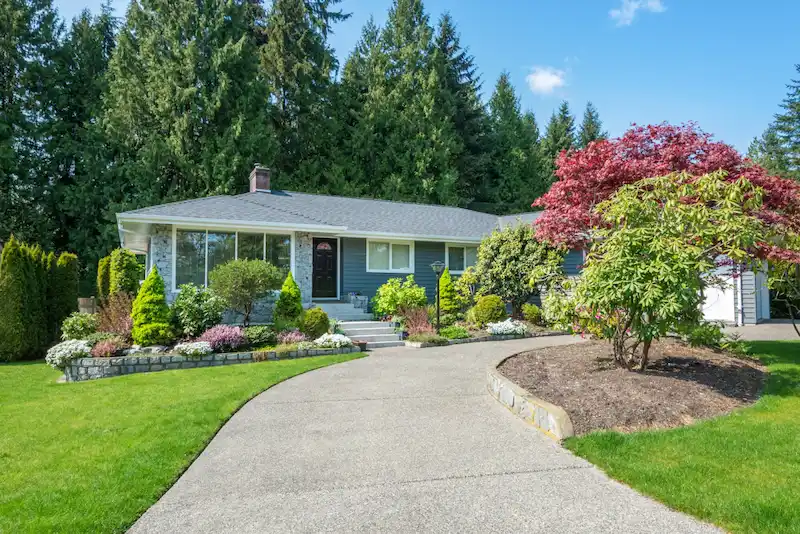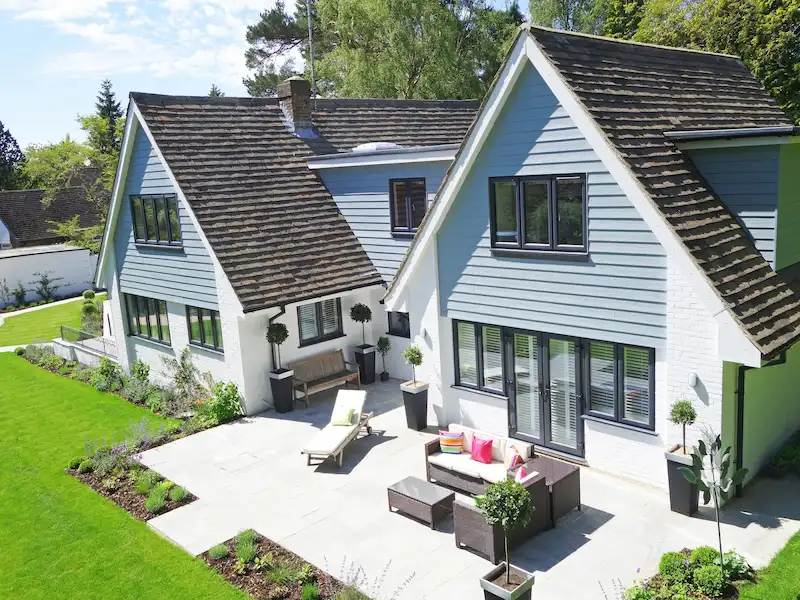Table of Contents
Roofs are fundamental in safeguarding properties, whether commercial or residential. However, while they serve similar purposes, the approach to maintaining and protecting commercial and residential roofs differs significantly. Each requires a tailored maintenance strategy due to their unique structures, materials, and exposure risks. Here’s why understanding these differences matters and how the right care can protect your property investment.
Structural Differences Require Specific Maintenance Approaches
Residential roofs are often pitched or sloped, which helps direct rain, snow, and debris away efficiently. This design helps prevent water pooling, making it less vulnerable to moisture damage. Commercial roofs, however, are typically flat or have a slight slope, which can lead to water accumulation if drainage systems are clogged or improperly maintained. This structural difference means that commercial roofs demand more frequent checks to prevent water buildup and potential leaks.
The materials used also vary, with commercial roofs often constructed from durable, weather-resistant materials like metal, TPO, or modified bitumen. Residential roofs commonly use asphalt shingles, tiles, or wood. Understanding these material differences is essential because each type requires distinct cleaning and maintenance products, as well as frequency of care. For example, asphalt shingles need less frequent but more delicate cleaning to avoid stripping the granules that protect them from UV rays, whereas a flat, rubber commercial roof may require periodic coating to enhance durability.
Unique Exposure Risks Call for Tailored Inspections
Commercial roofs typically bear heavier loads from HVAC systems, vents, and other large equipment that residential roofs usually don’t accommodate. This additional weight can strain commercial roofing structures, especially if the building faces extreme weather conditions. Regular inspections by professionals, like those at AAA Roofing in San Jose, or other companies located wherever you live help identify early signs of wear around HVAC supports and other equipment mounts. That way, you can prevent costly repairs or replacements down the line.
On the other hand, residential roofs face different exposure challenges, such as tree branches, which can scratch or puncture the roofing surface. Residential properties in tree-dense areas benefit from seasonal inspections to identify potential damage from fallen branches or leaf buildup in gutters. Residential roofs often require attention to seasonal debris that can trap moisture, fostering mold or rot if left untreated.
Drainage Needs Differ Between Roof Types
Effective drainage is crucial for both commercial and residential roofs, but the requirements vary due to their structural designs. Commercial roofs usually rely on a network of internal drains, scuppers, and gutters to remove water. Regular checks are necessary to ensure these drainage components remain unclogged, as blockages can lead to significant water pooling, causing leaks or even structural damage.
In contrast, residential roofs often feature simpler gutter systems that direct water away from the home’s foundation. These gutters are generally more accessible, but they also require regular clearing of leaves, twigs, and debris. Failure to maintain residential gutters can lead to water backing up, which may damage the fascia, and soffit, and potentially lead to interior water leaks. Knowing the specific drainage needs of your property’s roof is crucial to avoid water damage and maintain structural integrity.
Different Roofing Lifespans Mean Varying Investment and Maintenance
A well-maintained commercial roof can last between 20 and 40 years, depending on the material and quality of installation. However, this longevity requires regular, often more intensive upkeep due to the structural demands and exposure to environmental elements. For example, TPO and EPDM roofs may need periodic resealing, and metal roofs can benefit from rust-inhibiting treatments in harsher climates. Budgeting for maintenance and planning for occasional repair investments are essential for extending a commercial roof’s lifespan.
Residential roofs, especially those made of asphalt shingles, typically last 15 to 30 years. While their maintenance needs may be less intensive, they also require periodic inspections and care to maximize lifespan. Homeowners should be vigilant about checking for missing or damaged shingles, particularly after strong winds or storms, to prevent moisture intrusion that can lead to more extensive repairs. Understanding the expected lifespan of each roof type can help budget for repairs or replacements and avoid unexpected costs.
Safety Standards and Requirements Are Different
Commercial properties often have more stringent safety standards due to building codes and regulations that account for employee and public safety. Flat commercial roofs can become hazardous due to their design, with edges that may lack natural barriers. Regular inspections and safety checks are not only important for maintenance but are also often required to meet regulatory standards and liability concerns. Working with certified roofing professionals ensures compliance and safety while providing high-quality maintenance.
Residential roofs also require safety considerations, though the risks may differ. Steeper pitches on residential roofs can make cleaning and repairs more dangerous without the right equipment or expertise. For homeowners, it’s typically advisable to hire professionals for any roof work, as they have the experience and tools to safely navigate steep angles and reach difficult areas.
Frequency of Maintenance and Cost Considerations

Commercial roofs, given their structural design and exposure to heavy equipment, often need more frequent inspections and a larger budget for regular maintenance. Proactive maintenance is particularly important for commercial roofs because unexpected repairs can be far costlier than routine upkeep. A commercial roof that receives consistent care will last longer, saving the business owner significant costs over time.
For residential roofs, annual inspections, along with post-storm checks, are often sufficient to maintain performance. The cost of residential maintenance tends to be lower, though periodic investments in roof treatments, cleaning, and minor repairs help prevent larger issues. Homeowners should consider setting aside a small budget for regular maintenance to keep their roof in optimal condition.
Commercial and residential roofs each play a vital role in protecting their respective buildings, but they have different needs based on their structure, usage, and exposure. By recognizing and addressing these differences, property owners can ensure that their roofs remain in top condition for years to come. Engaging experts who understand the distinct demands of both roof types, provides peace of mind and reliable protection for these critical assets. With the right care, your roof—whether on a business or home—will continue to safeguard your investment and enhance your property’s value.
Want to explore something different? How to Easily Find the Right Home Improvement Store for Your Needs

